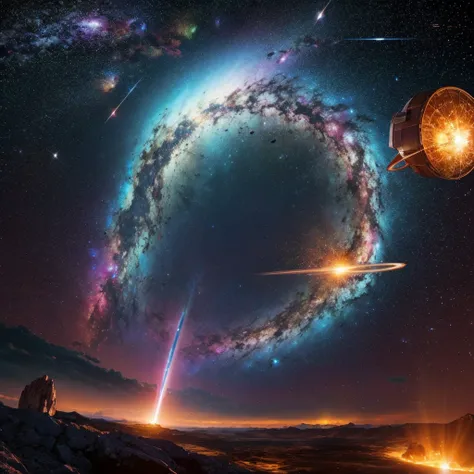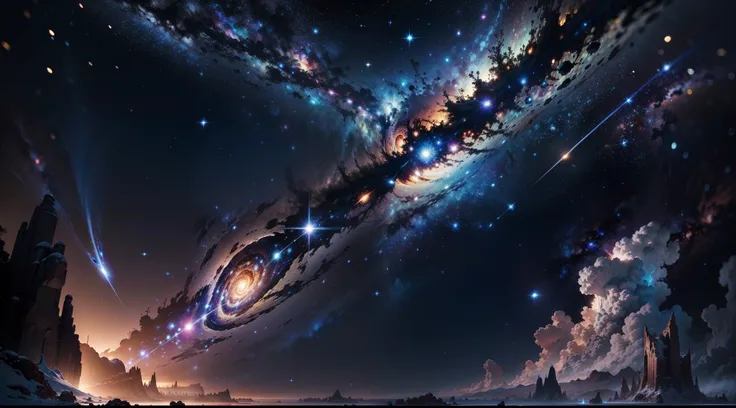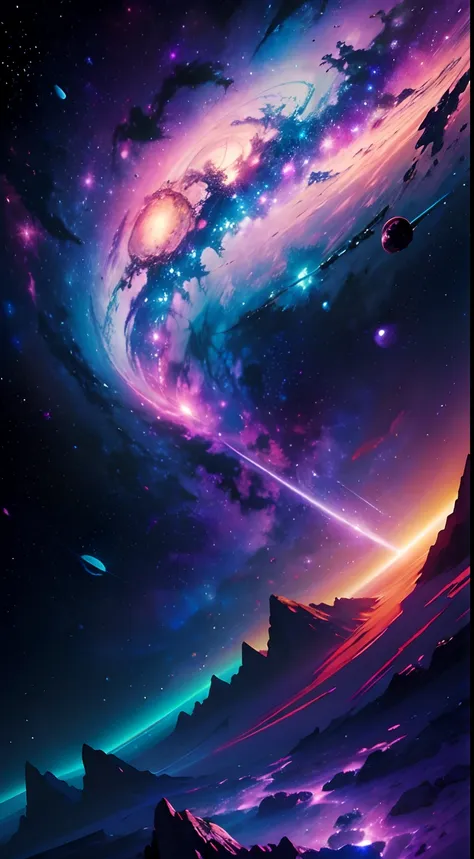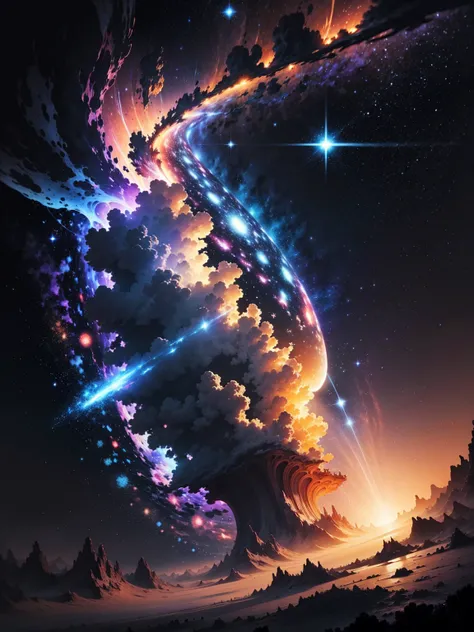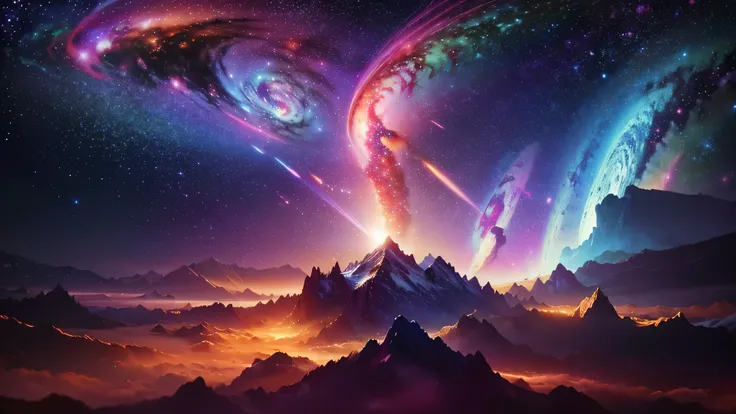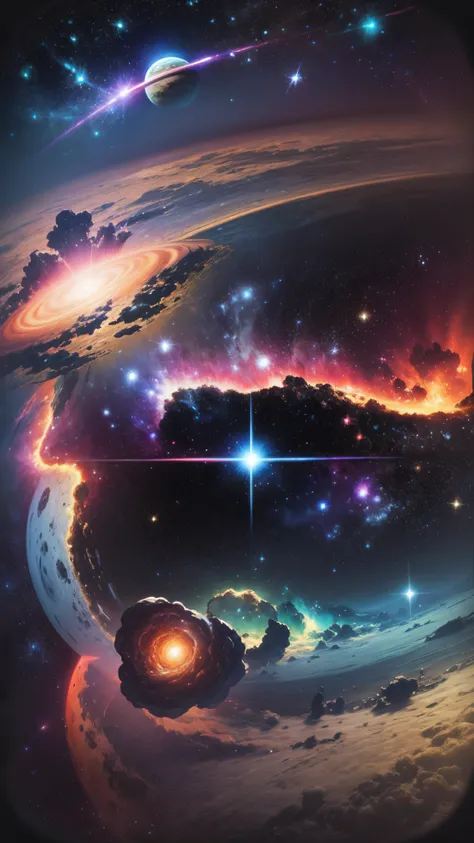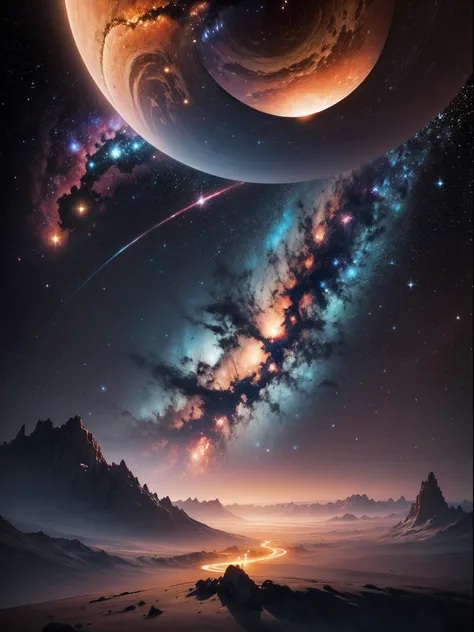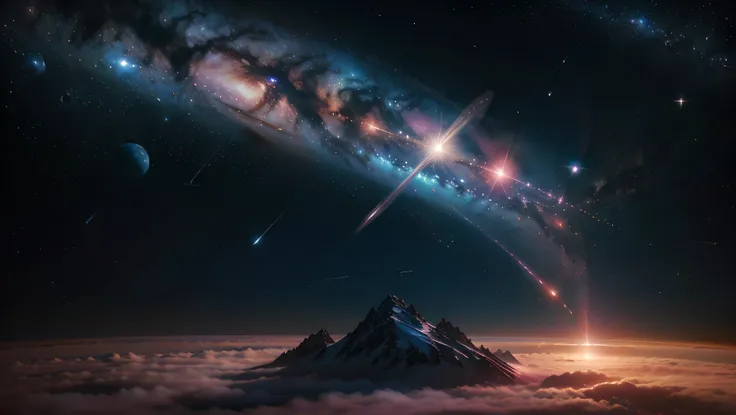A painting of a space station with a large disk in the sky

(The Big Bang): The origin of the universe is thought to have begun at an extremely hot, dense, and high-energy singularity. The Big Bang was the beginning of the universe, marking the beginning of time and space. At this stage, the entire universe underwent a huge explosion, releasing huge amounts of energy. Cosmic inflation: After the Big Bang, the universe went through a phase of rapid expansion called cosmic inflation. The theory of cosmic inflation holds that shortly after the birth of the universe, the universe underwent a very brief but rapid expansion, which made the universe very large and explained the uniformity and flatness of the structure of the universe that we observe. Primordial nucleosynthesis: After the explosion of the universe, the universe expands and cools further. During this time, the temperature drops enough for protons and neutrons to combine to form light elements such as hydrogen, helium and lithium. This process is called primitive nucleosynthesis, and it provides an explanation for the abundance of light elements in the universe. Compounding: About 380,000 years later, the temperature of the universe dropped enough for electrons to combine with the nucleus to form stable atoms. During this time, electromagnetic radiation in the universe can travel freely, producing cosmic background radiation (CMB), which is what we observe today. Galaxy formation and structure formation: As the universe evolved further, gravity began to play a role in the cosmic density fluctuations. Small increases in local density lead to the attraction and accumulation of matter, leading to the formation of galaxies, nebulae, and other celestial structures. This phase covers the formation of galaxies and cosmic structures in the universe.
كلمة التلميح
نسخ
(The Big Bang): The origin of the universe is thought to have begun at an extremely hot
,
dense
,
and high-energy singularity
.
The Big Bang was the beginning of the universe
,
marking the beginning of time and space
.
At this stage
,
the entire universe underwent a huge explosion
,
releasing huge amounts of energy
.
Cosmic inflation: After the Big Bang
,
the universe went through a phase of rapid expansion called cosmic inflation
.
The theory of cosmic inflation holds that shortly after the birth of the universe
,
the universe underwent a very brief but rapid expansion
,
which made the universe very large and explained the uniformity and flatness of the structure of the universe that we observe
.
Primordial nucleosynthesis: After the explosion of the universe
,
the universe expands and cools further
.
During this time
,
the temperature drops enough for protons and neutrons to combine to form light elements such as hydrogen
,
helium and lithium
.
This process is called primitive nucleosynthesis
,
and it provides an explanation for the abundance of light elements in the universe
.
Compounding: About 380
,
000 years later
,
the temperature of the universe dropped enough for electrons to combine with the nucleus to form stable atoms
.
During this time
,
electromagnetic radiation in the universe can travel freely
,
producing cosmic background radiation (CMB)
,
which is what we observe today
.
Galaxy formation and structure formation: As the universe evolved further
,
gravity began to play a role in the cosmic density fluctuations
.
Small increases in local density lead to the attraction and accumulation of matter
,
leading to the formation of galaxies
,
nebulae
,
and other celestial structures
.
This phase covers the formation of galaxies and cosmic structures in the universe
.
معلومات
Checkpoint & LoRA

Checkpoint
ReV Animated
0 تعليق
0
39
0















